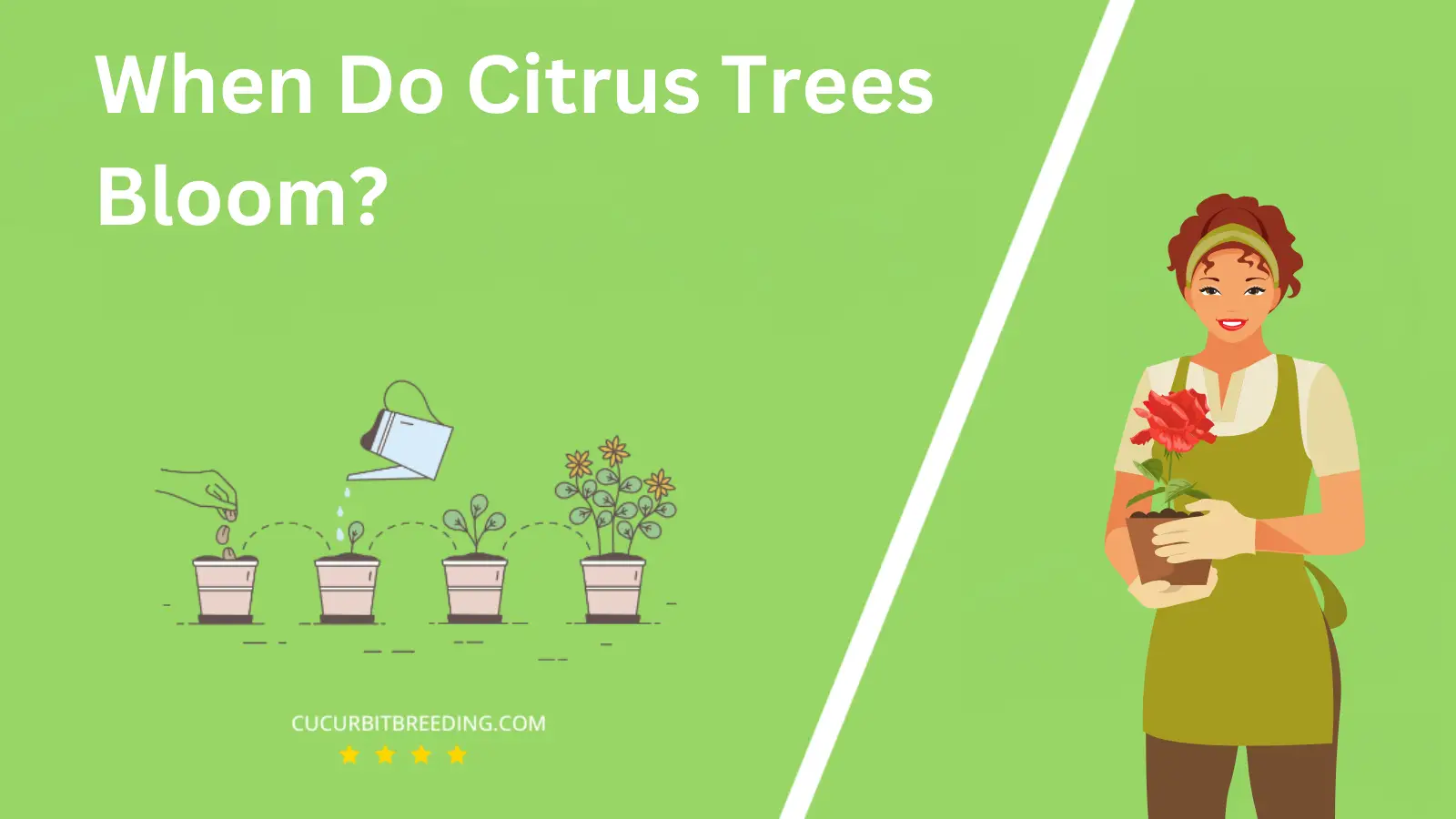
Ever wondered, when do citrus trees bloom? Well, the life cycle of these vibrant, fragrant trees is a fascinating topic. From tiny buds to juicy fruit, citrus trees offer a delightful journey of growth and renewal.
However, the time of blooming can hugely vary depending on the type and location. This article delves into the captivating world of citrus trees and their blooming seasons. Stay tuned!
When Do Citrus Trees Bloom?
Citrus trees typically bloom in the spring, with the exact timing varying depending on the species and the local climate. This period usually occurs between March and April, when the weather starts to warm up. The blossoms develop into fruit that matures over the summer and fall, ready to be harvested in the winter.
| Stage | Description |
|---|---|
| Germination | Spring (March-May) |
| Growth | Spring (March-May) |
| Blooming | Spring (March to May) |
| Dormancy | Winter (December-February) |
How Long Do Citrus Trees Bloom?
Citrus trees typically undergo a blooming phase once a year, usually in the early spring. The exact timing and duration can vary based on factors such as the tree’s species, age, health, and growing conditions. However, on average, a citrus tree’s blooming period lasts around two to four weeks. This period is often followed by a fruit-setting stage in which the tree begins to produce oranges, lemons, grapefruits, or other citrus fruits.
How Light Affects Citrus Trees Blooms?
Light plays a crucial role in the blooming of citrus trees. Citrus trees need a lot of sunlight, ideally 10 to 12 hours a day, to produce blooms. The process of photosynthesis, which is driven by light, allows the trees to produce the energy they need for blooming and fruiting. In addition, the change in light conditions, from longer summer days to shorter winter days, helps trigger blooming in some citrus varieties. However, too much intense, direct sunlight can potentially cause tree damage, which may inhibit blooming. It’s important to balance light exposure for optimal citrus tree health and production.
Will Citrus Trees Bloom the First Year You Plant Them?
Typically, citrus trees do not bloom in the first year they are planted. They usually begin to bloom and produce fruit between their third and sixth year, depending on the species and growing conditions. However, this timeline can vary based on factors such as the tree’s overall health, the quality of care it receives, and the specific type of citrus tree.
Will Citrus Trees Bloom Every Year?
Yes, citrus trees bloom every year. These trees typically produce flowers annually in the spring, which then turn into fruit. The exact timing and abundance of the blooms can vary depending on the specific type of citrus tree and its growing conditions. However, it’s important to note that not every flower will necessarily turn into fruit, as various factors such as temperature, watering, and sunlight can affect this process.

Should I Deadhead Citrus Trees Blooms?
No, you should not deadhead citrus trees blooms. Deadheading is a process usually reserved for flowering plants to promote further blooming. Citrus trees, however, do not benefit from this process. In fact, removing the blooms can actually harm the tree, as the blooms are what eventually turn into the fruit. Therefore, it’s best to let nature take its course and allow the blooms to naturally fall off the tree.
Top Reasons Mature Citrus Trees May Stop Flowering

There are several reasons why mature citrus trees may stop flowering. Environmental stress like temperature extremes, drought, or too much water can affect flowering. Nutrient deficiency, particularly of nitrogen, phosphorus, and potassium, can also prevent blossoming.
Additionally, improper pruning could lead to a lack of flowers, as pruning stimulates vegetative growth at the expense of reproductive growth. Finally, diseases and pests can harm the tree, making it less likely to flower. Ensuring your tree is in optimal health and receiving proper care is key to promoting its flowering.